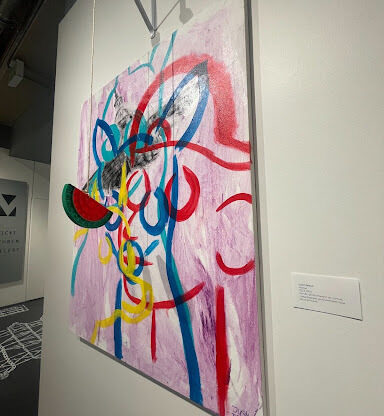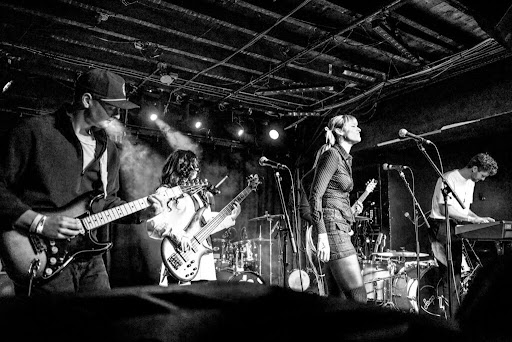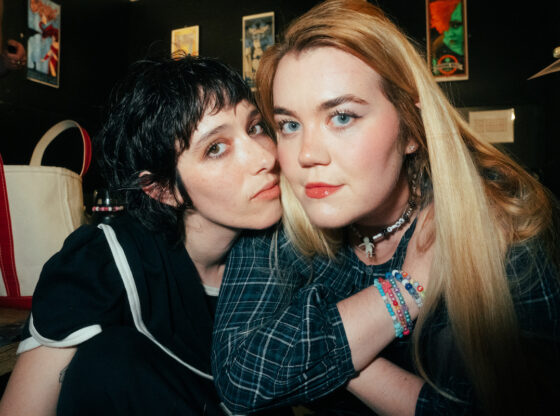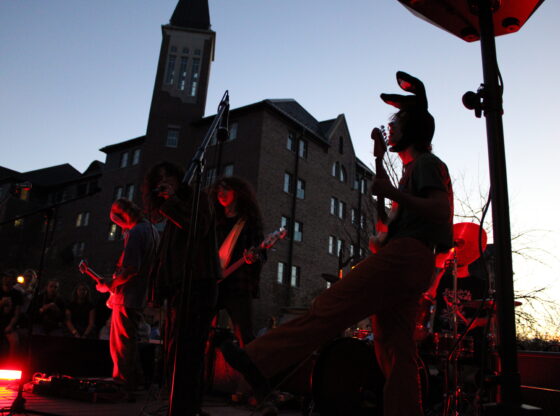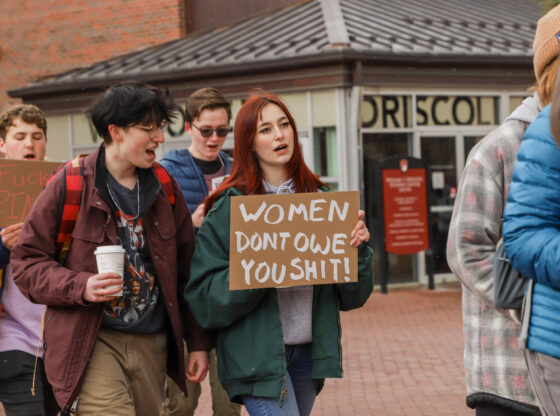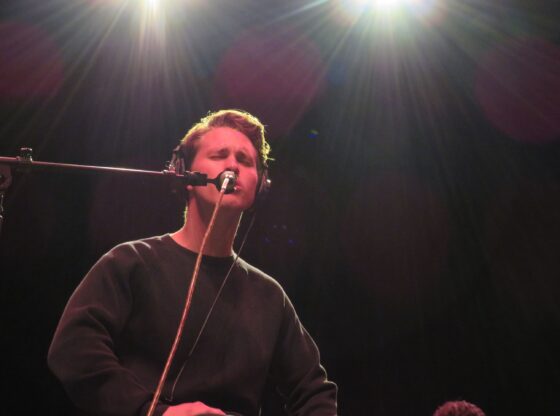On a bitterly cold February evening, a sold-out crowd packed the Gates Concert Hall at the Newman Center for the Performing Arts to enjoy a conversation between Museum of Contemporary Art Denver, exhibiting artist Cleon Peterson and his long-time collaborator and friend, Shepard Fairey. The talk was put on by the MCA Denver to celebrate the opening of Peterson’s exhibition, “Shadow of Men” at the museum.
The conversation, as conversations between artists tend to go, jumped from subject to subject, including a fair deal of profanity, anti-establishment inklings and drug talk, but as well was a fantastic glimpse into Peterson’s work and life. Additionally, Peterson and Fairey explored their collaborations together, and offered an engrossing look into the art world they inhabit and the processes behind their creation.
The entire first portion of the conversation was over Peterson’s upbringing and early career, which featured a fractured yet creative family life and how he came to meet Fairey. Peterson didn’t step back from fully letting us into his early career and life. As a child, Peterson lived in a creatively free household (his brother is also an artist) and was something of a prodigy. He grew up obsessed with history and the darker side of it, devouring books on World War II. Peterson was deeply into skateboarding and the art of the scene (something he had in common with Fairey). During the conversation, Fairey and Peterson both stated that their early art in the skate scene, and skateboarding in general, were so important to them as they sought to “do something our parents hated.”
In his teens, he and his skills were used by his mother for profit. She promised to buy him skateboards if he would paint idyllic still lifes of flowers for her to sell. At 16 however, he said “Fuck this” and stopped working for his mother, and he dropped out of school. He spent the next period of his life as a street kid, skateboarding and making art. It was during this time in particular that he began to identify with the darker side of things in life. He eventually ended up in Southern California, addicted to heroin. It was during this stage of his life, in 1997, that he met Fairey and tried to sell him his designed skateboards in order to score more heroin.
After a stint in prison—“Even though everyone was nice in prison, I didn’t feel like that was where I belonged”—Peterson was offered a rent-free studio space from Fairey. This started their working relationship and would eventually lead to Fairey hiring Peterson after he finally completed school. During this time in So-Cal, Peterson began to embrace the darker side of society and got to know it and understand its workings. He would use this knowledge later to develop his distinct, bold, graphic and thematically violent style in school.
His paintings began to showcase deeply violent, depraved scenes of the underworld. Peterson himself stated that the combination of his tumultuous home life, one that in his own words left him “confused about life and violence,” his time on the streets drug-addicted and his time in prison all added up to a surplus of dark experiences, ones that needed to be put down on paper for him to deal with them. He wanted to be honest about what it is like when you pull the curtain back from polite society.
While his earlier works were rooted strongly in reality, they began to take on a more abstract, dystopian, primal and anonymous look as he gained fame in the art industry. However, they kept his themes of power and power dynamics, violence, abuse of authority, war, destruction, authoritarian power and the general deviance of humanity.
One of the most interesting parts of the conversation was the discussion over how Fairey and Peterson separately view their works and the inspirations behind them, even though they both come from the same art scenes. Fairey stated that his work is meant to be shown in the public sphere, and is an attempt to create conversations that might not happen otherwise. Peterson, in turn, expressed that his work was more introspective and crafted from the personal. He attempts to make work unfiltered. He voiced that he doesn’t like to think of the viewer or the viewer’s reaction when crafting pieces and that he has always had a deep desire to make art that people both hate and love.
The last topic the two touched on was a poignant and well-timed look at how their art evolves and works with current politics. Fairey is well known for his activist, left-leaning pieces (he designed the 2008 Obama “Hope” poster), but Peterson is less specific about who his pieces represent, preferring to target broader themes than specific political entities. However, a talking point during this portion of the conversation was Peterson’s 2017 piece, aptly named “Trump.” The piece is a Greco-Roman style vase depicting a Marxist-esque stratification of society, with a still anonymous but vaguely Trump-like figure at the top.
Peterson poignantly ended the conversation with the best quote of the evening, stating how he thinks of the subjects of his work and how he uses his art:
“In life all we have is our stories, and that’s what makes us powerful.”




